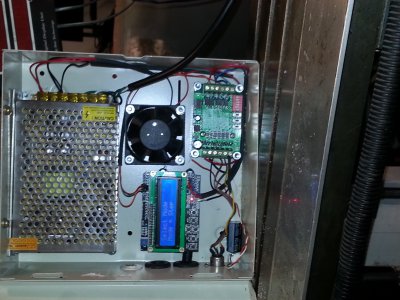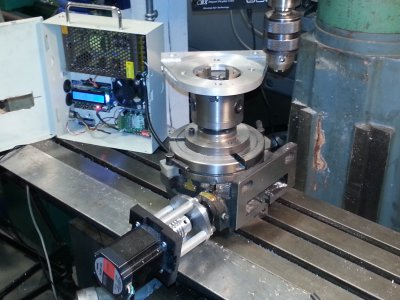Just wanted to thank Gary Liming for his article in Digital Machinist for an Arduino controlled rotary indexer. I completed the conversion to my rotary table with a stepper motor and it works great. No more index plates no more counting turns. It works awesome as well for radiusing parts in the continuous state. You really don't need to be an electronics whiz to build this and there are a ton of motor mounting ideas on the web. The download is easy for the software Gary put together which is the real time saver.
I added a couple of pictures as requested. Going forward I want to cast a better motor mount and set it up so I dont have to block the rotary tabe up from the mill table to clear the motor. The fan is unneccesary at the moment but I hope to finish the cover with external switches at a later date.
 )
)


I added a couple of pictures as requested. Going forward I want to cast a better motor mount and set it up so I dont have to block the rotary tabe up from the mill table to clear the motor. The fan is unneccesary at the moment but I hope to finish the cover with external switches at a later date.


Last edited:

